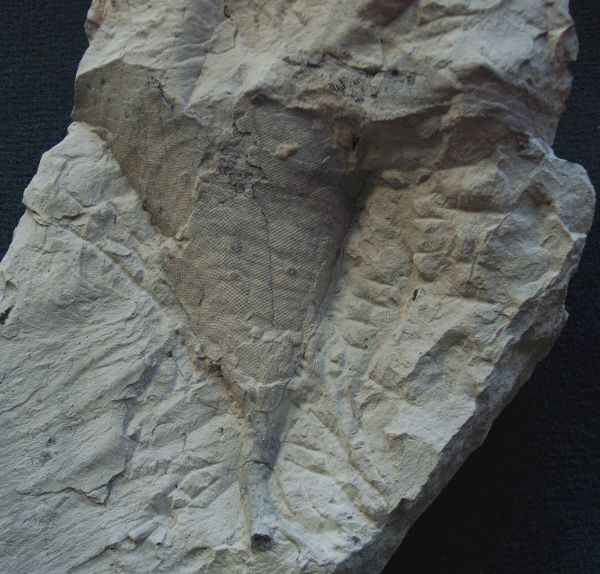
Coscinopora infundibuliformis
Goldfuss 1826
Coscinopora infundibuliformis is a rare hexactinellid sponge with a very regular an conspicuous arrangement of pores. It forms flaring funnels of considerable diameter, sometimes exceeding 500 mm. Commonly, only the strong root is found.
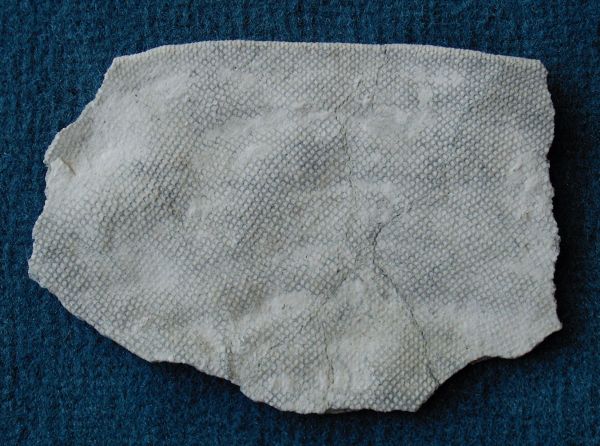
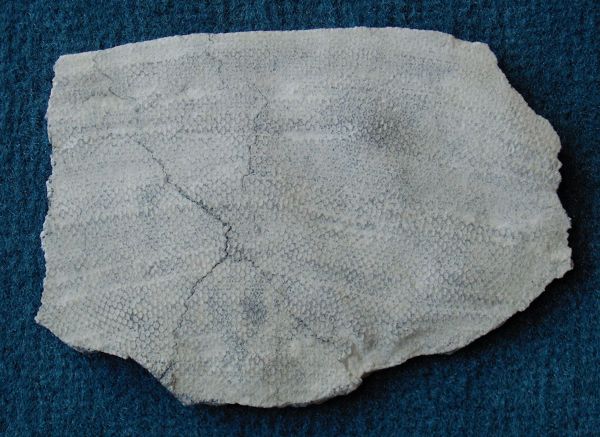
Coscinopora macropora
Goldfuss 1826
Coscinopora macropora is similar to Coscinopora infundibuliformis, but has a much coarser gridded surface. According to Schrammen (1912), it is also distinguished by shallower funnel shapes.
The two pictures show the dermal (top) and gastral (bottom) sides of a 2 mm thick fragment. Despite the delicate skeletal fabric and small wall thickness, such fragments show considerable mechanical strength.
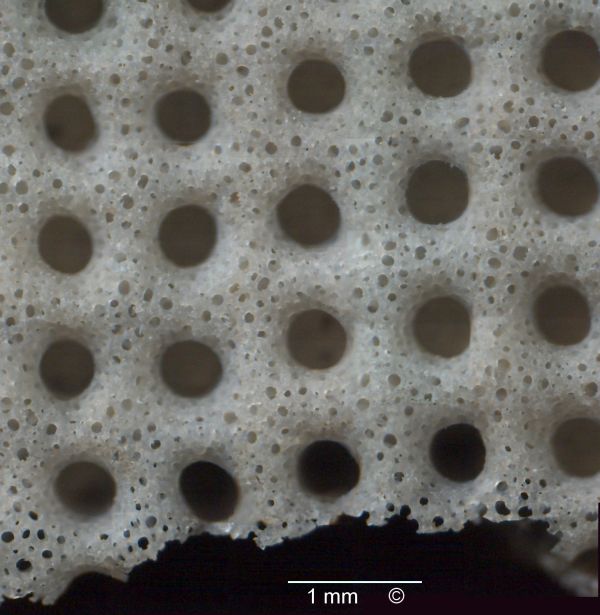
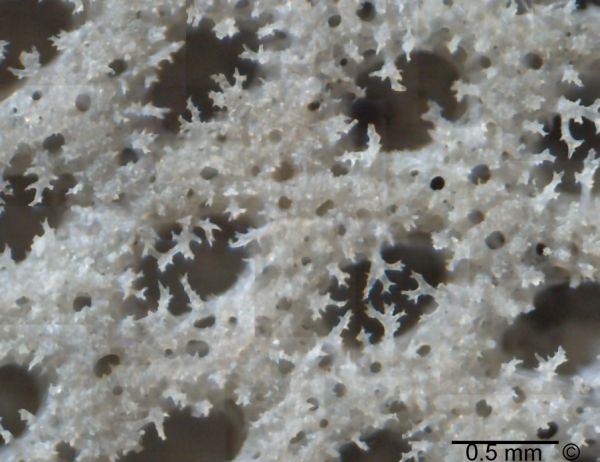
Photomicrographs of an etched specimen of Coscinopora macropora.
The two images show the very regular pore pattern of Coscinopora macropora.
The ostia (and adjacent epirhyses) of the dermal surface are circular, with smooth, round margins grading into the interjacent, finely porous bridges. The internal sides of these bridges represent the bottoms of the aporhyses.
The postica on the gastral side show oval apertures which are covered by numerous branched appendices of the gastral scleres.
The arrangement of the pores with respect to the funnel axis is "in quincunx" (cf. first picture on this page.)
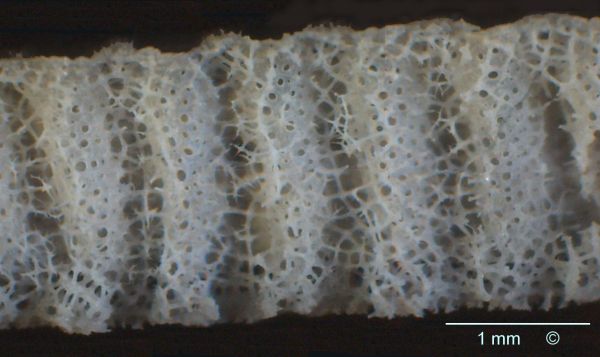
This image shows a cross fracture of the wall of Coscinopora macropora, revealing internal structure. The alternating skeletal styles correspond to epirhyses with membranaceous and porous walls, and aporhyses formed by canals through the dictyonal framework.
(dermal side on bottom, gastral side on top)
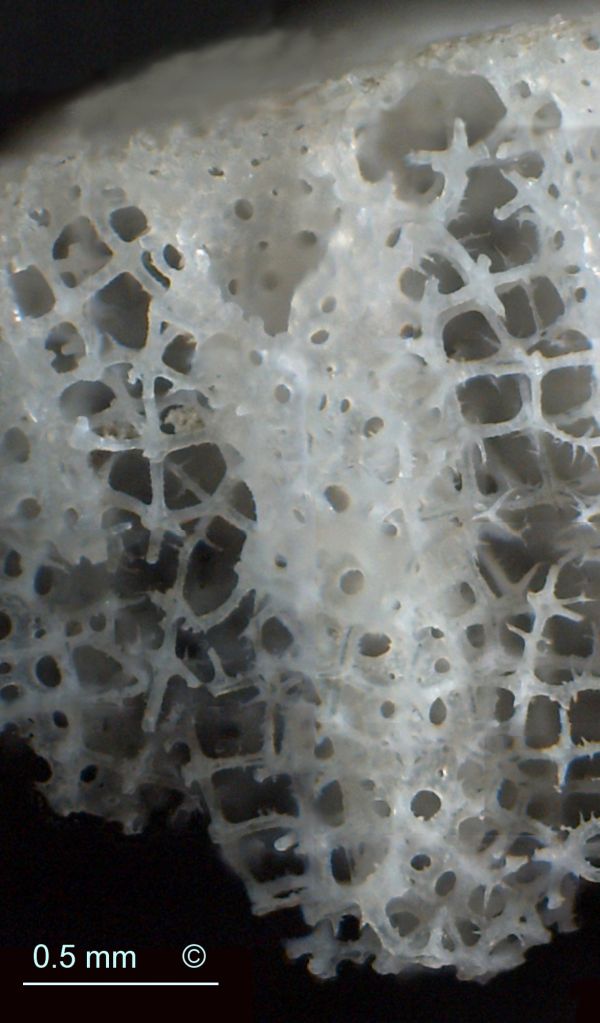
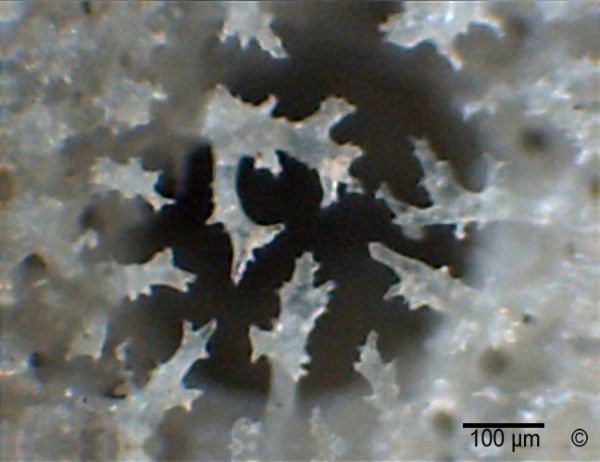
The image on the left shows an epirhysal canal sourrounded by dictyonal skeleton made up of lychnisks. The lychnisks are smooth or have spines; their lanterns are not very distinct.
The image below shows details of a covered postica.